 The colour revolutions in Georgia (“Rose” 2003) and Ukraine (“Orange”, 2004) seemed to promise that countries on the North and East of the Black Sea would shake off their “post-Soviet” label and take a firm and unwavering road towards Europe and the US. Perhaps the states of Central Asia would choose a similar route. Russia would have to take a back seat. A resurgent Russia under Putin has destroyed much of this myth, not least because of Russia’s involvement in the de facto states which have arisen from conflicts: South Ossetia and Abkhazia (Georgia), Nagorno-Karabakh (Armenia/Azerbaijan) and Transnistria (Moldova). Russian influence after 200 years of empire runs deep, but local factors also have a bearing; the EU and US have not applied sufficient drive or resources to the region, or to the conflicts, to balance or check Russia. “Who cares?”
The colour revolutions in Georgia (“Rose” 2003) and Ukraine (“Orange”, 2004) seemed to promise that countries on the North and East of the Black Sea would shake off their “post-Soviet” label and take a firm and unwavering road towards Europe and the US. Perhaps the states of Central Asia would choose a similar route. Russia would have to take a back seat. A resurgent Russia under Putin has destroyed much of this myth, not least because of Russia’s involvement in the de facto states which have arisen from conflicts: South Ossetia and Abkhazia (Georgia), Nagorno-Karabakh (Armenia/Azerbaijan) and Transnistria (Moldova). Russian influence after 200 years of empire runs deep, but local factors also have a bearing; the EU and US have not applied sufficient drive or resources to the region, or to the conflicts, to balance or check Russia. “Who cares?”
A one-day workshop on 11 May 2012 “Linkage and Leverage: External Actors and Conflicts in the Post-Soviet Space” sought to analyse the foreign drivers behind these conflicts. The workshop was organised by John Beyer and Dr Gwendolyn Sasse, and sponsored by the ESRC Knowledge Exchange Scheme. It was hosted by the European Studies Centre, based at St Antony’s College (University of Oxford)
Two panel sessions looked at Russian and EU involvement in conflicts and conflict resolution in the post-Soviet space from Moldova to Central Asia, and three focused on specific areas: Central Asia, the South Caucasus and Moldova. These were examined in terms of “linkage and leverage”, a framework developed by the political scientists Steven Levitsky and Lucan Way (2005, 2010).
Stretching the Methodology
Levitsky and Way posited two mechanisms which raise the cost of authoritarianism: Western leverage, defined as a country’s vulnerability to external pressure, and linkage to the West, defined as density of the country’s ties to the US and EU. Levitsky and Way had concentrated on democratisation, and had not applied the framework to conflicts. Non-western influence remained by and large outside their analysis, although they did concede a category of black knights. In addition to taking non-western influences more seriously, the workshop discussion started from the general premise that it is necessary to go beyond Levitsky and Way by probing the causal mechanisms behind “linkage” and “leverage”, to analyse the links between the two concepts, and to focus on the role of agency.
Russia the Black Knight?
Levitsky and Way’s black knight could better be described in tones of grey. While the West was often characterised as a democracy promoter, this was not always entirely the case, for example in the EU’s more nuanced approach to Azerbaijan, which tacitly moderates democracy promotion in view of the EU’s interest in Azerbaijan’s energy resources. And Russia is not precisely an “autocracy-promoter” in the region (the mirror image of Western democracy promotion). Instead, it is a status quo power.
Russia’s influence can be overestimated, thus obscuring the deep local roots of some conflicts across the former Soviet Union. Nevertheless, the fact that these de facto if mostly unrecognised states have survived for so long (20 years) is largely due to Russian involvement. Russia has obstructed the resolution of conflict whenever that would lower its influence in the region. Levitsky and Way did not analyse the military dimension, an important factor given Russian troops stationed in or near conflict areas across the region.
Russian speakers noted that from the Moscow point of view, the authority of the EU and US has been in decline since Levitsky and Way began their analysis; and the EU and US now have less interest in the area. Russians do not see Russia as an external actor in the post-Soviet space. Russia is present not just in terms of its political or economic interests, but by Russia’s sharing of a “co-habitat” with the other states in the post-Soviet space. Russia has powerful economic tools (restrictions on imports, increases of gas prices, restrictions on migrant labour); this leverage is complemented by more cultural sources of influence: shared language, history and culture, and kinship. Nevertheless, Russia sees itself as a “helpless hostage” of local conflicts across the former USSR. It is unable to solve these conflicts alone, since there are local factors at work – but nor can they be solved without Russian participation.
Classically, conflict resolution (like “regime change”) has been seen as a function of hard power. The conflicts across the former Soviet Union cast Vladimir Putin’s controversial characterisation of the fall of the USSR as the ”greatest tragedy” of the 20th Century in a new light: in that we cannot yet appreciate its full cost (in human lives, etc). The Moscow view is that Russia was fortunately able to “freeze” these conflicts through a stalemate of equal forces; it is not Moscow’s fault if the conflict parties were later to be divided into “good” and “bad” sides.
It can be argued that democratisation may actually hinder conflict prevention. Politicians not facing the uncertainty of genuine elections have more freedom to make unpopular decisions, particular when popular opinion will not tolerate any concessions to the opposing side. For example, the resolution of the Nagorno-Karabakh conflict might be more feasible were former Azerbaijani President Haidar Aliev – with his unshakeable charismatic authority – still alive.
The EU: no will to be a White Knight?
When conflicts broke out around 1991, both the EU’s foreign policy provisions and the EU itself were very different from their present state. Since then, there have been changes in the EU itself and in its evolving engagement in the former Soviet Union. Important landmarks were the EU’s two eastern enlargements (2004, 2007), which brought new borders, new interests, and new linkages to the region – as well as first-hand experience in implementing post-Communist reforms. Recently, the EU has developed new tools (the bilateral European Neighbourhood Policy and the multilateral Eastern Partnership) to engage in the region, and improved its internal coordination. The EU can supplement traditional state-to-state linkages by developing people-to-people contacts, and show its relevance not just economically (as an increasingly important trading partner and investor) but also by bringing “knowhow”. While the EU wants a stable and prosperous eastern neighbourhood, it would also like this to be based on certain standards.
On the other hand, the EU seems never to have perceived these conflicts as an immediate threat to its security – which explains its low level of involvement in them. There is a tension between the EU’s relations with the states themselves (for example, within the Eastern Partnership framework) and its engagement in their internal conflicts; for example, EU interest in Moldova proper must be distinguished from its (far lesser) interest in Transnistria. And there can be a conflict between the two: Moldovan “reunification”, incorporating the Russophile Transnistria, would surely shift the country’s orientation away from Europe. Rather than empowering break-away regions, the EU must strive to make the mainland country (Moldova as a whole, or Georgia) attractive to the populations of the separatist region. The EU must capitalise on its strengths in technical assistance – a “desecuritisation” of EU foreign policy that is visible in its recent Eastern Partnership initiative.
Central Asia
Subregional organisations are an example of non-Western linkages and leverages, for example the Collective Security Treaty Organization (CSTO) bringing together the Central Asian states and Russia. This is essentially a political project, aimed at consolidating cooperation between “like-minded states” – hence it also has a normative dimension. Across the post-Soviet space (and Central Asia in particular) Russia presents itself as the “indispensable regional conflict manager” but is nonetheless wary of making open-ended commitments in such conflicts, as seen in Kyrgyzstan in 2010. Uzbekistan is the key Central Asian state, and in some ways Russia’s competitor there. In a context of revived nervousness resulting from the Arab Spring and the potential outbreak of new conflicts, it is unclear under what conditions CSTO troops would become involved, and under what mandate.
Iran plays a marginal role both in Central Asia as a whole, and in its specific conflicts. At the critical juncture of 1991 (the fall of the Soviet Union), it looked like Iran could play a powerful or even destabilising role in Central Asia; however, it was hampered by its recent war with Iraq and a desire to normalise its relations with the West. Now, Iran is actually quite weak (militarily, with an economy dependent on oil), and has been unsuccessful in making its culture and variety of Islam attractive in Central Asia. In terms of foreign policy, it has other priorities and prefers not to challenge Russian hegemony in Central Asia – which it views positively, as a counterweight to the United States’ global dominance.
Kyrgyzstan is a “test case” of linkage and leverage in Central Asia, as it set up links with the West after independence and was commonly (but inaccurately) viewed as an “island of democracy” in the region. Western external linkages to Kyrgyzstan have empowered a variety of actors, who exploit these links, leading to a “pluralisation” of the political landscape. There was also a tendency for Western democracy promotion to decline. The US has been increasingly prioritising security over democratisation. In fact, Western linkages have not been purely positive; they have also fuelled corruption and criminality – and ignited anti-US and anti-Western feeling. Regarding China, there is a “rift” between elites’ distrustful discourse and China’s growing appeal for ordinary people.
The South Caucasus
There are problems with analysing the three South Caucasus states in terms of linkages and leverages: they are now more independent than ever before, as demonstrated by their diverging trajectories since 1991. Objectively, the region’s volatile situation makes it an “unattractive” place for engagement – yet it still has surprisingly many suitors. The West has changed its attitude since the Russo-Georgian war, once again relegating its relations with the region to a “subset” of its relations with Russia. Meanwhile, the key question on Russian linkages in the South Caucasus is how to differentiate the legitimate ones from the illegitimate ones (those that merely serve to increase Russian power). Yet despite these numerous external presences, Armenia, Azerbaijan and Georgia hold the keys to their own futures.
Levitsky and Way initially classified Georgia as “low linkage, high leverage”, but it could equally be the opposite. The question is therefore why, despite its high linkage to the West, Georgia has not democratised further. Nationalism is an important factor in Georgia (including separatist conflicts): it was the ideology of Georgia’s first rulers after independence in 1991, carefully avoided by Shevardnadze, and then revived by Saakashvili – only now in a more civic form. Yet, while Georgia enjoys growing contact with the West, this is largely absent in the two breakaway regions (South Ossetia, Abkhazia), where Russia prevails. Since the Rose Revolution in 2003, there have been more and more “technocratic” linkages with the West and state consolidation, which have reduced tensions and internal strife in the areas of Georgia controlled by the central government.
Nagorno-Karabakh drifting like the Titanic
The dynamic of the Nagorno-Karabakh conflict can be compared to the Titanic; despite a continuous stream of victims, there is the (dangerously misleading) impression that the relatively stable status quo of “neither peace nor war” will last forever, but sooner or later a collision will occur. Russia is the main external actor here, with the most linkages. Russia is ambiguous in the conflict (formally backing Armenia and providing it with cheap weapons, yet careful not to antagonise energy-rich Azerbaijan), ambiguity being its main source of leverage. Yet there are limits to what Russia can do here, and it often falls prey to manipulation by both sides. Meanwhile, for the West, the region remains peripheral, and not worth sacrificing relations with Russia for. Iran, in turn, has publicised the failure of negotiations (the OSCE-led Minsk Process): Iran aims in this case to keep non-regional actors out and to establish a greater Iranian role in any resolution.
As a small, poor, country, Moldova is especially prone to external influence. Over the last decade, Moldova has dramatically developed its links with the EU: in Levitsky and Way’s framework, it is nearer “high linkage, high leverage” in terms of relations with the West. This informs Moldova’s strengthening of democracy in 2009. Nevertheless, while Moldova’s front door faces the EU, with pro-Russian Transnistria in such a strong position, Moldova also effectively faces Russia. In terms of resolving the conflict over Transnistria, Russia is an important player (it has troops stationed there) and would need to receive something in return for withdrawing a strategic asset which blocks NATO expansion. Meanwhile, the EU should focus on amplifying its long-term leverage in both Moldova and Transnistria by increasing the resources devoted to Moldova, and coordinating its approach with Ukraine, which will lead the OSCE resolution effort in 2013.
A new linkage factor is the influence of the Moldovan diaspora. The votes of the Moldovan diaspora are becoming increasingly important in domestic elections (now an often-decisive 2%, equivalent to 2 seats in parliament). The post-2009 Alliance for European Integration, aware of the mostly pro-European orientation of the diaspora, has deliberately courted Moldovans abroad. Another important linkage is television, with new pro-European channels entering a market dominated by Russian ones. Moldovan civil servants often start off with high expectations of the EU, but their day-to-day contacts bring disappointment. The EU should learn from Levitsky and Way and increase linkages with both Transnistria and the rest of Moldova. But the problem is that Transnistria is not a high priority for the EU. Who cares about Transnistria?
Limitations of the framework: shades of grey
Already, in the context of regime change, Levitsky and Way’s framework of linkage and leverage had its shortcomings. The extension of these concepts into the realm of conflict-resolution is an even more complex undertaking, though it usefully highlights a number of underspecified empirical and conceptual factors. For example, a distinction needs to be made between leverage—over elites—and the effects on the population. There are neither purely “white knights” nor purely “black” ones; instead, there are many shades of grey among the external actors. It is important to recognise that the EU and the West in general are not always benign actors. Similarly, a more nuanced view of Russia’s involvement is called for, as it is difficult to speak of a single, unitary “Russian” actor. The conflicts in the region, and linkages across state borders, combine old legacies with new, post-1991 developments. This overlay makes it hard to generalize which actors produce certain types of leverage.
Dr Gwendolyn Sasse is a University Reader in the Comparative Politics of Central and Eastern Europe at Oxford University, and a Professorial Fellow at Nuffield College.
This is a workshop report from an event held at St Antony’s College, Oxford.

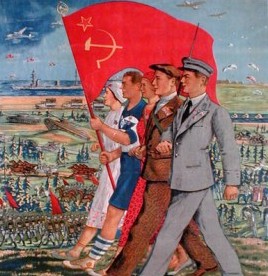


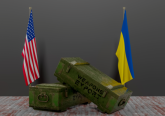
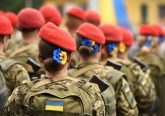
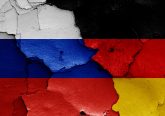
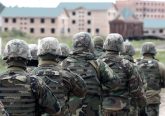

No Comment